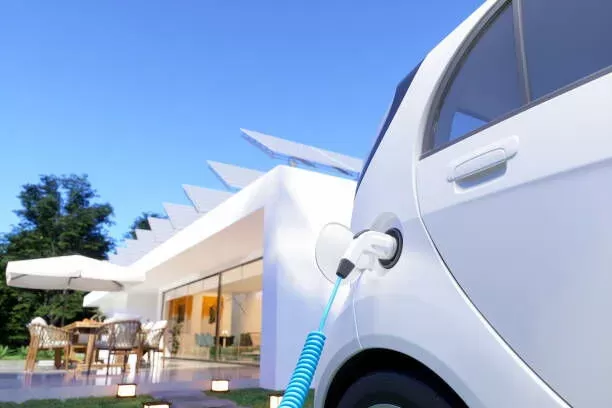Notifications

10 minutes, 32 seconds
-21 Views 0 Comments 0 Likes 0 Reviews

Choosing the Right Home EV Charger: A Comprehensive Guide
As a top EV charger manufacturer in China, LiCB Charge offers reliable AC and DC electric vehicle charging stations along with comprehensive charging solutions.
As electric vehicle (EV) adoption continues to rise, having a reliable and efficient home charging solution is more essential than ever. Whether you're new to EVs or an experienced driver upgrading your setup, understanding the various types of chargers and their features is key to a hassle-free charging experience.
EV chargers generally fall into three categories: Level 1, Level 2, and Level 3. Level 1 chargers are the slowest, using a standard home outlet for basic charging. Level 2 chargers are faster and ideal for everyday home use, while Level 3 chargers, or DC fast chargers, offer rapid charging but are typically reserved for commercial or public spaces due to their higher power needs.
This guide will break down the different types of chargers, factors to consider, and key features to help you select the best charger for your home.
Understanding the differences between the three charger levels is essential before choosing the right one:
Level 1 Chargers
Level 1 chargers connect to a standard 120V household outlet, providing a modest charging rate of 3–5 miles of range per hour. While they are affordable and easy to install, these chargers are best suited for plug-in hybrids or drivers with short commutes. They are generally too slow for fully electric vehicles (EVs).
Level 2 Chargers
Operating on a 240V supply, Level 2 chargers offer significantly faster charging — typically 12–60 miles of range per hour. They are ideal for home installations and can fully charge most EVs overnight. Given their efficiency and reasonable installation costs, Level 2 chargers are the most popular choice for residential use.
Level 3 Chargers (DC Fast Chargers)
Level 3 chargers provide rapid charging, with the ability to charge an EV up to 80% in just 20–30 minutes. However, these chargers require a commercial-grade power supply and are impractical for home use, typically found at public charging stations or along highways.
For residential installations, you'll likely be choosing between Level 1 and Level 2 chargers, with Level 2 being the most practical option for most EV owners.
Another key decision when selecting a home charger is whether to go with a single-phase or three-phase model. This depends on the electrical setup in your home and your charging needs.
Single-Phase Chargers
Most homes in North America use single-phase power, typically delivering 120–240V. Single-phase chargers are perfect for residential use and provide enough power for daily charging. They are the most cost-effective solution for home EV charging.
Three-Phase Chargers
Three-phase chargers offer higher power outputs (240–480V), making them ideal for faster charging. These chargers are commonly used in commercial settings or in homes with specialized electrical systems, especially in parts of Europe. While they provide quicker charging, they require a three-phase power supply, which is not standard in most residential properties.
If you don't already have a three-phase power supply, opting for a single-phase charger is typically the best choice.
When it comes to charger compatibility, understanding the difference between Type 1 and Type 2 connectors is essential.
Type 1 Chargers
Type 1 chargers are primarily used for American and some Asian-made EVs (such as Nissan and Mitsubishi). These chargers feature a five-pin connector and are ideal for home charging, especially if you have a single vehicle to charge.
Type 2 Chargers
Type 2 chargers, featuring a seven-pin connector, are the standard in Europe and are increasingly becoming the global standard. They are commonly used with Level 2 chargers and offer faster charging. Type 2 connectors are ideal for home charging, particularly if you plan to upgrade your vehicle in the future.
For flexibility and future-proofing, consider choosing a Type 2 charger, especially if you're planning to charge multiple EVs or anticipate upgrading to a newer vehicle.
Another consideration is whether you prefer a tethered or untethered charger.
Tethered Chargers
Tethered chargers come with a permanently attached cable, much like a gas pump hose. This setup offers convenience, as you won’t need to handle cables each time you charge. However, tethered chargers may not offer as much flexibility, especially if you own different EVs or intend to switch to a new one in the future.
Untethered Chargers
Untethered chargers have a socket where you can plug in your own cable, providing greater flexibility. This design allows you to switch cables or use different lengths as needed. While untethered chargers offer a cleaner, neater look when not in use, they require you to have your own charging cable at all times.
If convenience is a priority, a tethered charger is the way to go. If you want more flexibility and the ability to switch cables, an untethered charger is a better choice.
Compatibility between your vehicle and charger is critical for seamless charging. In North America, most non-Tesla EVs use the J1772 connector for Level 1 and Level 2 charging.
However, there are a few other connector types to consider:
J1772 Connector
The most common connector for non-Tesla EVs in North America, supporting both Level 1 and Level 2 charging.
NACS (North American Charging Standard)
Originally Tesla's proprietary connector, NACS is now being adopted by other manufacturers such as Ford, GM, and Rivian. If you own a Tesla or a newer EV adopting this standard, ensure your home charger supports NACS or purchase an adapter.
CCS (Combined Charging System)
Used for DC fast charging, CCS connectors are primarily found at public charging stations. If you plan to use DC fast charging often, ensure your vehicle and home charger are compatible.
Always check your vehicle's connector type and make sure the charger you select supports it — or consider buying an adapter.
When it comes to installation, EV chargers can be either plug-in or hardwired.
Plug-In Chargers
These chargers connect to a standard outlet, like a NEMA 14-50 or NEMA 6-50. They are easy and cost-effective to install and offer the flexibility to relocate the charger if needed.
Hardwired Chargers
Hardwired chargers are permanently connected to your home’s electrical system and provide a cleaner look, especially if installed outdoors. While they may offer better weather resistance and be necessary for higher-power units, they generally require a licensed electrician for installation and involve higher upfront costs.
Before you purchase an EV charger, consider these essential factors:
Charging Speed: Look for chargers that provide at least 32 amps for faster charging.
Smart Features: Wi-Fi-enabled chargers allow you to monitor and control your charging through an app. Features like scheduled charging and remote start/stop can be very useful.
Cable Length: Ensure the charging cable is long enough to comfortably reach your vehicle.
Durability: For outdoor installations, make sure the charger has a high weather resistance rating (e.g., IP66 or higher).
Future-Proofing: Choose a charger that can accommodate higher power outputs or different EV models if you plan to upgrade in the future.
Incentives: Check for local, state, or federal rebates that can help reduce installation costs.
Selecting the right home EV charger is a crucial step in enhancing your EV ownership experience. By understanding the differences between charger types, considering factors like installation, compatibility, and future-proofing, you'll ensure that your home charging setup meets your current and future needs.
Take your time to research options, compare products, and consult with a professional electrician if needed. With the right charger, you'll always be ready to hit the road with a fully charged EV.Know more about Google SEO Directory
China EV Chargers EV Charger Manufacturer Smart EV Chargers Electric Car Chargers Electric Vehicle Chargers Electric Car Charging Stations

